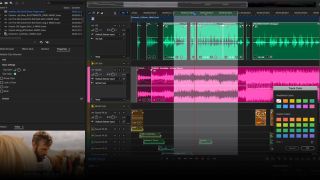Getting a decent audio finish is important and the best audio editing software can help you with that. From music and soundtracks, to dictations and interviews – by working on the recording after the event it can help the resultant recording sound better than you'd imagined.
Yup, you no longer need to have a padded sound-proof room with thousands of dollars worth of kit to get a decent recording. You can now splash out and get the best audio editing software that will give you more features than most non-professionals will know what to do with. Or, if you're not at that level, there are entry-level options and even free editors – something for everyone then.
From editing a podcast to enhancing audio recordings, it's all easier, faster and more fun to do than ever before. You can cut, mix and edit all from your laptop, or even your phone. Although for the really powerful software you're going to need a computer or laptop and a decent one if you don't want to be waiting around. Planning to add visuals? Check out the best video editing software too.
While you can pay more and get faster software with more features, that can also mean more complications and unnecessary tools you won't use. It may be worth starting on a more entry-level software option and once you've learned all there is to know, upgrading as your skills expand. That said, if you want to throw yourself in with a big brand option you will have lots of support videos and forums online to teach yourself as you go.
1. Adobe Audition: Best audio editing software overall
Why you can trust Top Ten Reviews
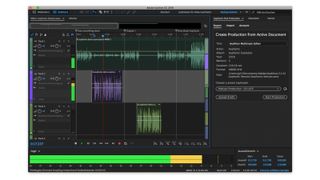
Adobe Audition is one of the most user-friendly audio editing programs available. You can customize the layout to accommodate your workflow, and the software has all the best tools for editing and finalizing any audio project.
This allows you to record multiple sources simultaneously on separate tracks. This makes post-production tasks like editing and effects processing easier. All that makes it ideal for podcasters, vloggers and anyone straddling the amateur/professional divide.
Audition’s audio restoration tools make it easy to fix damaged or old recordings. This is super simple to use, as you highlight he offending sounds, hit a button and Audition takes care of removing that from the rest of the audio. Audition doesn’t negatively affect the source material when it restores poorly recorded audio either – a big plus.
To use the program, you pay for a monthly, yearly or multi year subscription. It also comes packaged with Adobe’s Creative Cloud subscription, which is a better deal if you plan to also edit photos or videos. Adobe offers discounts to students and teachers as well as businesses that need multiple licenses.
2. Audacity: Best free audio editing software
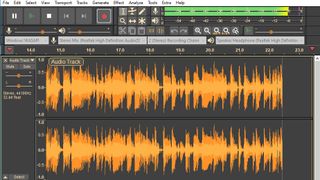
Audacity is free, open source audio editing and recording software with an impressive list of editing and restoration tools. The interface isn’t the most attractive, but it is easy to use.
Audacity’s noise-reduction plugin is a one-click solution for removing unwanted room noise. An impressive tool for a free piece of software. The click-removal tool also worked well, but it can drastically alter the source material and make it sound worse, so use it with caution. Luckily, Audacity allows you to preview the edit to adjust the settings before making any destructive changes.
This program works on Macs and PCs and is a light load for your computer. It’s compatible with most of the important audio file types, including MP3 and lossless formats like WAV, AIFF and FLAC. Audacity imported our 1.5-hour podcast test segment in less than five seconds, which was faster than most of the for-pay programs we tested.
3. Magix Samplitude Pro X: Most feature-rich audio editor
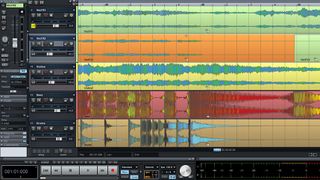
Magix Samplitude Pro X has an excellent user-interface and a great selection of tools for repairing and restoring noisy recordings. It's primarily suited to musicians as it has a very musical focus and a wide selection of instrument options.
This powerful DAW offers 999 track support, 256 physical inputs and 32-bit recording up to 384kHz. What makes Samplitude unique is that it stores audio files, it calls objects, allowing you to carry out operations that in most other DAWs could only be done at the mixing stage. As such you can play with audio in a non-destructive way. This is great for lining up an album full of tracks ready for mastering, for example.
A Windows only platform that justifies its higher-end price tag with lots of powerful features which make it ideal for professional musicians.
4. Avid Pro Tools: Best for studio professionals
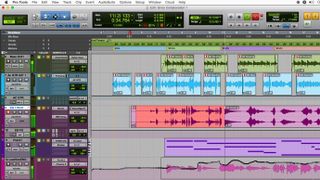
Avid Pro Tools is a truly professional audio editor that's used in studios all over the world as the go-to system of choice for music producers, film editors and beyond. As such it's made to work well with physical controls, isn't easy to pick-up for beginners and costs a tidy sum.
But all that's part of what makes this a very powerful tool. This DAW offers video specific features like 4K, 120fps support, Dolby Atmos editing and even Netflix Post Technology. Beyond video you have the ability to work with 1,024 MIDI tracks, 512 instrument tracks and 128 auxiliary tracks.
Stand out tools like Clip Gain, to quickly adjust volumes; and Beat Detective, to fix timing issues easily, are just a few of the powerful features this audio editing suite offers to justify its price.
5. Apple Logic Pro X 10.5: Best for pro Mac users
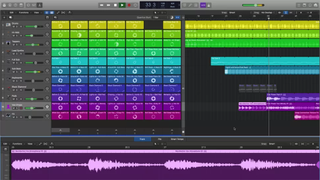
Apple Logic Pro X 10.5 is a professional grade audio editor that incorporates some of the best features into an interface that's super intuitive and supportive of a fast workflow. Yes, this isn't for newbs, but it certainly does make the complex world of audio editing seem less daunting. For professionals it just makes life easier.
The software does all this by offering all the features you'd expect but also a clever system of grid-based clip launching. These "cells" allow you to compose and arrange music in real-time, making this ideal for broadcasting or live music events. Other features like the Remix FX plugin, Step Sequencer, and Quick Sampler all help to further speed up and automate the working process.
In a typical Apple fashion this takes a tool we already have and makes it more minimalist and therefore easier to use. It also does this while undercutting the big names in the business on price.
6. Acoustica 6: Best professional free audio editor
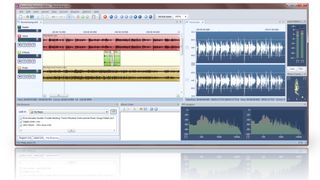
Acon Digital’s Acoustica 6 audio editing software has an attractive, well-organized user interface. The effects, recording tools and plugins are divided into logical categories in the menu ribbon, which streamlines the post-production process.
All that and it's totally free despite being aimed at pro users and with all the tools to back that up.
Acoustica is one of the most customizable audio editing programs out there. In addition to the editing window, there is a file browser, an effects chain and a waveform analyzer you can add or remove as you need. The program also allows you to customize the toolbar with the editing tools you use most, to maximize your workflow. Acoustica’s tools created some of the best results in our audio restoration test.
Important Features to Consider
Tracks
The number of tracks your editing software supports limits how many audio streams you can edit together at once. Many albums have been recorded on four-track recorders, but you don’t need to limit yourself by that. It’s possible to merge tracks down, freeing up one by combining two, or you can just let rip with as many tracks as your software supports and your hardware can manage. Many of the apps we’ve tested here can only record two tracks per session, meaning you’ll need to edit multiple recording sessions together if you need more.
Recording
Some software is dedicated to editing, requiring you to record elsewhere and import your audio files, while other apps can handle the recording process too. Some can record from multiple sources at the same time, which is known as multitrack recording and useful if you’re organizing a round-table podcast in which everyone has their own mic.
Editing
Simple editing tasks like fades, cuts, volume normalization (making all your tracks the same loudness), and the copying and pasting of sections come as standard. Additional features are more specific to the app in question. The very best software lets you play with effects such as echoes and pitch-shifts, and may have mastering output options to make sure you hit industry-standard volume levels ready for digital distribution or even turning into CDs.
How much should you spend on Audio Editors?
The only reason to spend more than $100 on editing software is if you plan to compose music with virtual instruments, produce complex arrangements or mix and master recordings professionally.
We recommend $200 as the right price for music production software, and $500 or more if you are recording and finalizing projects in a professional capacity. The programs we tested for this comparison are the perfect solution for recording podcasts, editing and repairing field recordings and digitizing an old vinyl collection.
